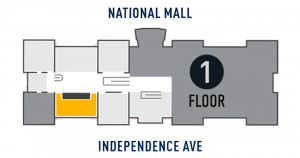Charles and Anne Lindbergh used this camera, a popular model of its day, during archeological surveys of Pueblo ruins in the Southwest and Mayan ruins in Mexico in 1929. Flying a Curtiss D-12 Falcon, the Lindberghs explored and photographed the Canyon de Chelly area in New Mexico and found several Indian ruins hidden from ground view. During the Lindbergh-Carnegie Maya Expedition, they located unknown Mayan ruins in Mexico. Both surveys highlighted the value of aviation and aerial photography to archeological research in remote areas.
Display Status
This object is on display in Thomas W. Haas We All Fly at the National Air and Space Museum in Washington, DC.

Object Details
Country of Origin
United States of America
Type
EQUIPMENT-Photographic
Manufacturer
Graflex Corp.
Physical Description
Brown box, with Taylor-Hobson lens; cook anastimat sn#157701,6.5in
Dimensions
3-D (Lens Open, Focusing Hood Open): 41.9 × 15.2 × 41.3cm (1 ft. 4 1/2 in. × 6 in. × 1 ft. 4 1/4 in.)
3-D (lens open, bellows closed): 1 ft. 5 1/4 in. × 6 1/2 in. × 8 3/4 in., 8lb. (43.8 × 16.5 × 22.2cm, 3.6kg)
Materials
Metal, Glass, Fabric
Inventory Number
A19791497000
Credit Line
Donated by Juan T. Trippe
Data Source
National Air and Space Museum
Restrictions & Rights
Usage conditions apply
For more information, visit the Smithsonians Terms of Use.

